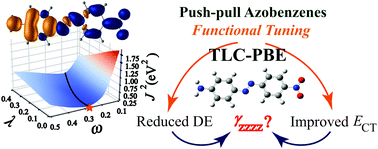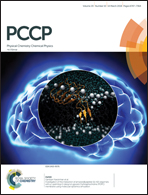Calculation of linear and nonlinear optical properties of azobenzene derivatives with Kohn–Sham and coupled-cluster methods†
Abstract
Linear polarizabilities (α) and second hyperpolarizabilities (γ) of unsubstituted azobenzenes and ‘push–pull’ azobenzene derivatives are investigated using Kohn–Sham theory (KST) and coupled-cluster (CC) approaches. Various standard exchange–correlation functionals as well as a non-empirically ‘tuned’ long-range corrected (LC) functional with range-separated exchange are used in the KST calculations. When compared to correlated ab initio calculations and measurements, the tuned functional gives accurate low-energy excitation energies, especially for charge transfer (CT) transitions, and performs well for α. Basis set and solvent effects are also studied. In contrast to expectations, but in agreement with a prior study of π-conjugated systems that do not have low-energy CT excitations, the improvements of the CT excitation energies for the push–pull π-chromophores due to tuning do not go along with clear improvements of γ toward the CC reference data, likely due to the importance of the dynamic electron correlation for this property.



 Please wait while we load your content...
Please wait while we load your content...